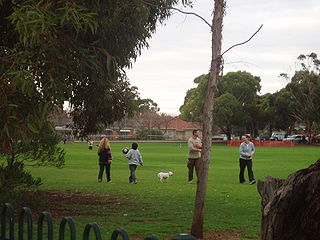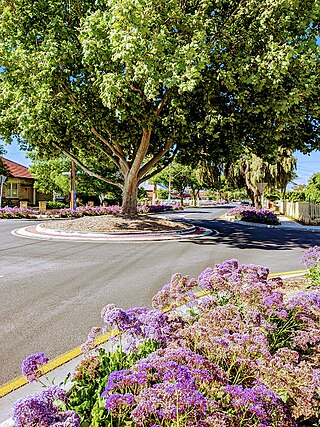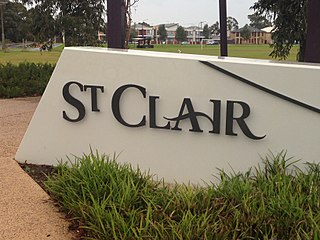Related Research Articles

The House of Assembly, or lower house; Is one of the two chambers of the Parliament of South Australia. The other is the Legislative Council. It sits in Parliament House in the state capital, Adelaide.

Glengowrie is a suburb of the Australian city of Adelaide, approximately 12 kilometres south west of the city centre. The name Glengowrie means "Glen of Gowrie", so called in honour of Lord Gowrie, Governor-General of Australia from 1936 to 1944.

Unley is an inner-southern suburb of Adelaide, South Australia, within the City of Unley. The suburb is the home of the Sturt Football Club in the South Australian National Football League (SANFL). Unley neighbours Adelaide Park Lands, Fullarton, Hyde Park, Malvern, Parkside and Wayville.

West Croydon is an inner western suburb of Adelaide, South Australia.

Henley Beach is a coastal suburb of Adelaide, South Australia in the City of Charles Sturt.

Ridleyton is an inner northern suburb of Adelaide, South Australia. It is located in the City of Charles Sturt.
Fulham Gardens is a western suburb of Adelaide, South Australia in the City of Charles Sturt.
Kidman Park is a western suburb of Adelaide, South Australia. It is located in the City of Charles Sturt.

Kilkenny is an inner north-western suburb of Adelaide, South Australia. It is located in the City of Charles Sturt. It is named after Kilkenny, Ireland.
Findon is a western suburb of Adelaide, South Australia. It is located in the City of Charles Sturt.

Beverley is a western suburb of Adelaide, South Australia. It is located in the City of Charles Sturt.

St Clair is a suburb of Adelaide, South Australia, and administered by the City of Charles Sturt. St Clair is geographically located with in the Hundred of Yatala, and was first recorded as the name for the suburb on 6 November 2012 by the Surveyor General of South Australia. The suburb is bounded by Cheltenham Parade, Torrens Road, Woodville Road and the Outer Harbor train line. The Cheltenham Park Racecourse was located here up until the late 2000s and new houses were built in the years after that.
Burnside was an electoral district of the House of Assembly in the Australian state of South Australia from 1938 to 1970. Before 1938 the Burnside area was represented by the three-seat multi-member electorate of Sturt. It was abolished in the 1970 parliamentary reforms, and was replaced with Bragg.
Edwardstown was an electoral district of the House of Assembly in the Australian state of South Australia from 1956 to 1970.
Goodwood was an electoral district of the House of Assembly in the Australian state of South Australia from 1938 to 1956.
Gouger was an electoral district of the House of Assembly in the Australian state of South Australia from 1938 to 1977 and which was associated with the town of Balaklava.
Prospect was an electoral district of the House of Assembly in the Australian state of South Australia from 1938 to 1956.
Central District was an electoral district for the Legislative Council of South Australia from 1882 until 1912. Prior to the passing of the Constitution Act Further Amendment Act 1881, the Legislative Council had been 18 members elected by people from across the entire Province.
Central District No. 2 was an electoral district for the South Australian Legislative Council from 1913 until 1975. It was created by the Constitution Act Further Amendment Act 1913, which divided the Central District into two districts, each to elect four members. The size of the Legislative Council was to remain at 18 until the next general election, and increase to 20 by adding a new member for each of the two new districts. From its creation until the next general election, Central District No. 2 comprised the extant Assembly electoral district of Torrens. The act also redrew the Assembly electoral districts from the next election. From then, Central District No. 2 would comprise the new Assembly districts of Sturt and East Torrens.
North-Eastern District was an electoral district for the Legislative Council of South Australia from 1882 until 1912. It was then renamed to Midland District and continued until 1975 when the separate districts were abolished and the state elects members to the Legislative Council as a single district since that time.
References
- 1 2 "Statistical Record of the Legislature 1836 to 2009" (PDF). Parliament of South Australia. Archived from the original (PDF) on 11 March 2019. Retrieved 20 September 2013.
- ↑ "History of South Australian elections 1857-2006, volume 1". Electoral Commission of South Australia. Archived from the original on 2 March 2014. Retrieved 23 July 2015.